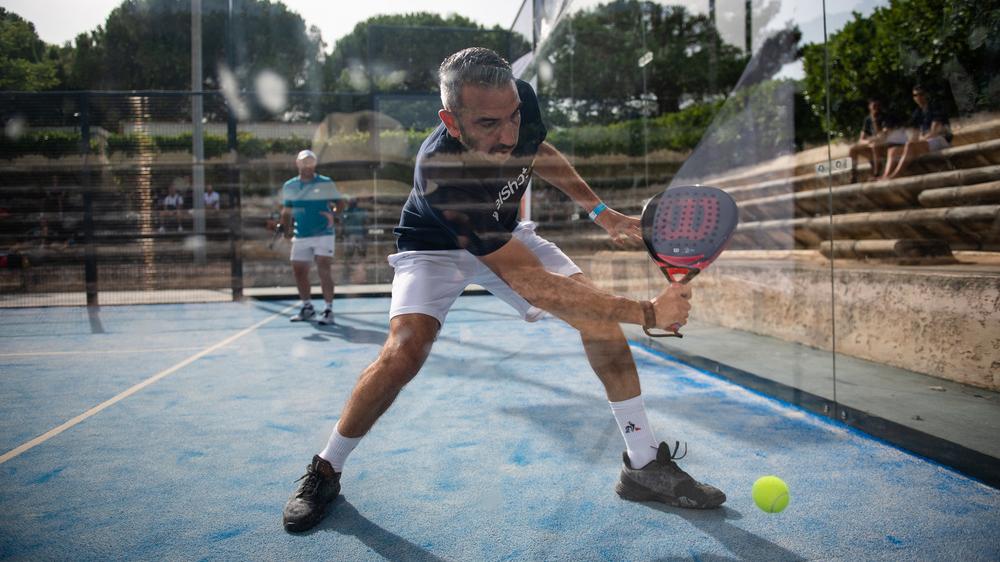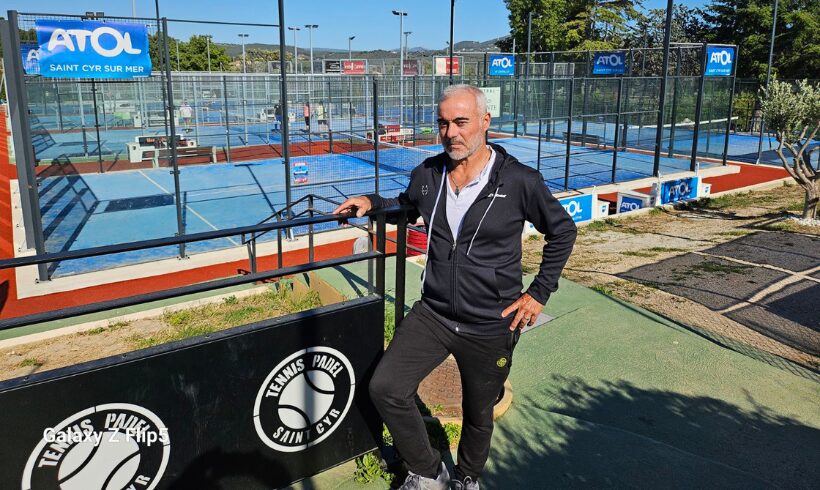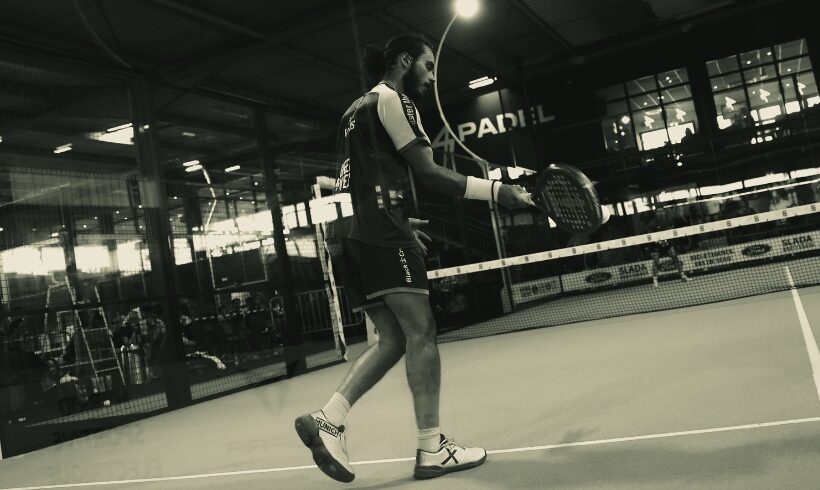This is an announcement that will have the effect of a bomb in the world of padel : the International Tennis Federation (ITF) wants to take the reins of padel internationally, at the expense of International Federation of Padel (FIP). Through 3 acts, we will try to explain everything to you about this unusual situation and this war which is looming between the FIP and the ITF.
ACT I – The padel now a priority for…the ITF?
As you can imagine, this climate of strong tension between the International Federation of Padel and the International Tennis Federation (ITF) started from a trigger. And to tell you the truth, it's not just any. Let's re-contextualize that.
In its annual report which will be presented on November 14, theITF has clearly stated that its role is “to act in the interests of its members”. However, it also adds that at least 25 of the federations which are under its supervision also govern the padel in their countries and especially that apparently “at least 15 of them would have expressed their desire to see the ITF take the leadership in the world of padel". A rather interesting and relatively surprising statistic when we know that all the federations in question are also members of the FIP. But it does not stop there.
Always in its principle "to act in the interest of its members", the ITF announces that it wishes to create an environment of harmonious development between the padel and tennis, that she wants to create a competition structure open to all ITF member states and above all, and this is where we are interested: she wants there to be only one governing body for the member national tennis associations who are also responsible for the padel in their country. In other words, the ITF wants to position itself as the one and only governing body of the padel, and this in place of the FIP already in place in the world of padel.
Of course, all these declarations are accompanied by a well-crafted plan. The ITF announces in black and white that it wants to include the padel in its field of action and as a governing body, it intends to harmonize rules, promote the growth and development of the padel, to defend the interests of the padel and promote its integrity and reputation.
Measures which strangely seem to echo the general priorities set by Luigi Carraro and the FIP. And to sow even more divisiveness, it is also stated within the report that “National Associations members of the ITF which are also members of the FIP may maintain their membership of the FIP”.
Very good, but what would be the role of the FIP if now there was only one regulatory body (in this case the ITF), and that the latter took over absolutely all the powers of the FIP?
ACT II – The FIP strikes back
Alerted by this bomb dropped by the ITF, Luigi Carraro and FIP wasted no time in responding.
In writing a letter to all ITF members, Luigi Carraro wanted to put things in context by recalling all that the FIP has done since its creation 31 years ago. He notably recalled that the FIP had organized 16 editions of the World Championships of padel, 13 editions of the Junior Worlds, 14 of the European Championships, etc., and all this while specifying the action of the FIP with the various sponsors, its activity on the five continents and the fact that it is undeniably involved in the development “ exponential” experienced by the padel at present.
In this same letter, he made a point of condemning the future intentions of the ITF vis-à-vis the padel and took the opportunity to severely tackle the ITF by stipulating that over the 31 years of existence of this sport: “the ITF had never had any involvement in the padel, whether as a tournament organizer or as a regulatory body“. A strong announcement from the FIP President who wants to highlight the fact that the ITF probably wants to take the padel in order to “control its development”.
Carraro added: “If the ITF declares itself as the regulatory body of the padel in the world, we stand ready to bring legal documents proving the illegality of this action”, and he went on to say that the action of the ITF “would go against the Olympic charter and the code of ethics of the Olympic committee”.
By analyzing the content of this letter, we can therefore realize that as expected, the FIP does not intend to let things go. By sending a letter directly to all the member states of the ITF, precisely before this ITF meeting on Monday 14 November, the purpose of which is to take up the elements of the report that we have deciphered for you, it is a way for the FIP to put pressure on the ITF. She intends to take the lead in this affair, so as not to find herself trapped by the International Tennis Federation.
That is why, in addition to this letter from Luigi Carraro, a legal action before the Court of Arbitration for Sport in Lausanne has been brought by the FIP against the ITF.
ACT III – What leeway for the FIP?
If the FIP has taken the initiative to refer this case to the courts, it is because it now has its back against the wall. Why ? Quite simply because if it is true that theITF has more than 15 of its members who are already "for" it to become the number 1 body in the padel, and especially since there are powerful nations behind it, the FIP clearly has something to worry about.
Furthermore, it should not be forgotten that the national tennis federations govern the padel in many countries, such as France or Italy for example. This means that these federations are automatically “under the control” of the ITF, and that the FIP has very little leeway vis-à-vis them.
So how to interpret this case?
Could this be a real "confession of weakness" on the part of the governing bodies of the world of tennis, who see their discipline (tennis) in the trough of the wave and who, on the contrary, are in the front row to observe the rise of the padel ? Or is it a real desire to legislate and structure the padel in the best possible way in order to sustain its development?
Many questions which remain unanswered at the moment T, but which risk shaking the world of padel in the days, weeks and months to come. Beyond this particularly unprecedented situation, one can wonder about the impact that there could be in the event of a change (or not) of the regulatory body of the padel the impact this could have on its global development.
Who will have the last word, the ITF or the FIP?
Stay tuned…
Passionate about football, I discovered the padel in 2019. Since then, it's been crazy love with this sport to the point of abandoning my favorite sport.





































































































 José Manuel Escin at the inauguration of Casa Padel DOS: “Finally, and thank you!”
José Manuel Escin at the inauguration of Casa Padel DOS: “Finally, and thank you!” Premier Padel Brussels P2 – The eighths live
Premier Padel Brussels P2 – The eighths live Premier Padel Brussels P2 – Collombon and Bidahorria qualified for the second round
Premier Padel Brussels P2 – Collombon and Bidahorria qualified for the second round Simon Boissé: “We know that there are two nations in front of us”
Simon Boissé: “We know that there are two nations in front of us” Marie Maligo: “This period of frequent changes of partners was beneficial for me”
Marie Maligo: “This period of frequent changes of partners was beneficial for me” Alain Idier: “Adding tracks of padel, without sacrificing tennis”
Alain Idier: “Adding tracks of padel, without sacrificing tennis” Manuel Vives: “It’s extremely difficult to get by financially”
Manuel Vives: “It’s extremely difficult to get by financially” Padel Score comes to Tahiti for American Express Padel Cup!
Padel Score comes to Tahiti for American Express Padel Cup! Mind Padel Lyon and the Auvergne Rhône-Alpes League innovate with team tournaments
Mind Padel Lyon and the Auvergne Rhône-Alpes League innovate with team tournaments Simon Boissé: “We know that there are two nations in front of us”
Simon Boissé: “We know that there are two nations in front of us” Nallé Grinda: “Democratize the padel in the USA with PadelX "
Nallé Grinda: “Democratize the padel in the USA with PadelX " It’s off to a bad start for Pincho Fernandez and Javier Barahona…
It’s off to a bad start for Pincho Fernandez and Javier Barahona… Do you know the Rafa Nadal Academy Tour?
Do you know the Rafa Nadal Academy Tour? Play at padel on his yacht? Possible for €233.000!
Play at padel on his yacht? Possible for €233.000! Our Top 10 training courses padel in France and Europe
Our Top 10 training courses padel in France and Europe At the heart of padel – Episode 25: Paul and Andoni answer your questions
At the heart of padel – Episode 25: Paul and Andoni answer your questions Tactical padel – What to do when faced with players who systematically stay at the bottom?
Tactical padel – What to do when faced with players who systematically stay at the bottom? The basic tactics of padel
The basic tactics of padel At the heart of padel – Episode 25: Paul and Andoni answer your questions
At the heart of padel – Episode 25: Paul and Andoni answer your questions At the heart of padel – Episode 23: defend the window well
At the heart of padel – Episode 23: defend the window well Prohibition on playing topless Padel : the reasons
Prohibition on playing topless Padel : the reasons FIP Tour – Going far from Europe, THE strategy to earn points!
FIP Tour – Going far from Europe, THE strategy to earn points! What is a good football player? padel ?
What is a good football player? padel ? “Lefties give me headaches when I play against them!”
“Lefties give me headaches when I play against them!” At the heart of padel – Episode 14: how to earn points in winter?
At the heart of padel – Episode 14: how to earn points in winter? A par 4 is always a winner...even if you manage to defend it!
A par 4 is always a winner...even if you manage to defend it! Carbon fiber VS fiberglass: what to choose?
Carbon fiber VS fiberglass: what to choose? How to effectively test a racket padel ?
How to effectively test a racket padel ? La padel to fight Parkinson's disease
La padel to fight Parkinson's disease Don't play with a cracked or broken racket, your body will thank you!
Don't play with a cracked or broken racket, your body will thank you! Michel Cymes: “The padel, physically, it’s serious!”
Michel Cymes: “The padel, physically, it’s serious!” Jeremy Gala: “Promote the padel among young people in Belgium remains a challenge”
Jeremy Gala: “Promote the padel among young people in Belgium remains a challenge” The French Touch Academy organizes its selection day Padel-Study
The French Touch Academy organizes its selection day Padel-Study Report on the detection and training of younger generations
Report on the detection and training of younger generations